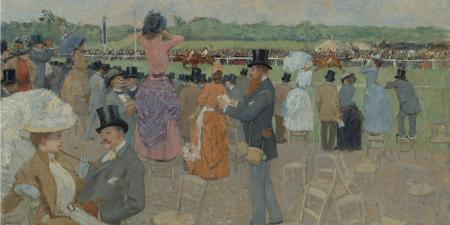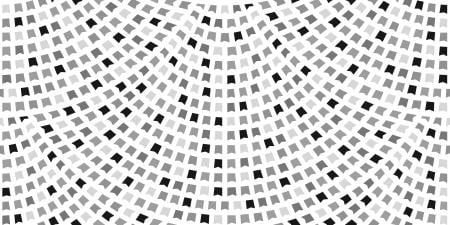Case
Mr. Phal had a history of intermittent sharp neck pains and dizziness and was seeing his internist, Dr. Lang, for persistent abdominal pain. After a thorough work-up, including several visits, extensive laboratory analyses, and a negative abdominal CT, no explanation for the pain could be found. Dr. Lang therefore referred Mr. Phal to a psychiatrist in her group to screen him for somatization disorder, depression, or other psychiatric illness that might underlie his symptoms. Mr. Phal was Cambodian and 55 years old. He was resistant to seeing a psychiatrist because he believed that taking pills to feel better was an American practice. But because the work-up had revealed nothing so far, he decided he would try this too.
The psychiatrist, Dr. Hanson, greeted Mr. Phal and learned that he was employed as a store manager and that he enjoyed his work. Mr. Phal was widowed and had two grown children. He did not seem depressed to the psychiatrist. He stated that he did occasionally have bad dreams, but they were not frequent. When asked the question, "Have you ever had a panic attack, when you suddenly felt frightened or anxious or suddenly developed a lot of physical symptoms?" Mr. Phal replied, "No." Nonetheless, Dr. Hanson was worried because he was familiar with this patient population and realized that most adult Cambodians residing in the U.S. had suffered some form of trauma during the period of upheaval and genocide of the 1970s. He probed further and learned that the neck pains reminded Mr. Phal of pains he had had while he was in a labor camp. On the basis of this interview and other assessment tools, Dr. Hanson diagnosed Mr. Phal with post-traumatic stress disorder (PTSD) and explained to Dr. Lang in a letter that Mr. Phal's somatic complaints were most likely a manifestation of this diagnosis. Dr. Hanson recommended cognitive behavioral therapy in addition to treatment with an antidepressant (an SSRI, or selective seratonin reuptake inhibitor) for management of Mr. Phal's symptoms.
Dr. Lang was conflicted. She had thought the referral would result in a diagnosis of "somatization disorder," which she would use mainly for documentation purposes. She was not sure she agreed with Dr. Hanson's diagnosis, particularly given the lack of classic symptoms and therefore did not fully agree with the psychiatrist's management plan. At the same time, she had no alternatives and so she was willing to transfer management to the psychiatrist. Nevertheless she thought that Mr. Phal would probably resist medication for a psychiatric condition and did not think that talking would do him much good. The internist wondered how she might best care for Mr. Phal.
Commentary
"I cannot see the true face of Mount Lu because I am standing on top of it"
Su Shi (1036-1101 CE) – Song Dynasty poet, painter, and calligrapher
Humans have surely striven to recognize, treat, and prevent health problems since before recorded history. Practitioners of the art and science of healing are known to exist in every culture. Psychiatry, however, is a conspicuously Western cultural artifact dating back barely 200 years. Deep in its ideological core lies the value placed by Westerners in the distinction between a "soma," a physical body that is attached to but distinct from a "psyche," or mind. Unsurprisingly, Western medicine has practitioners who treat diseases with physical causes and practitioners who treat disorderscaused by mental mechanisms. Aside from the cultural ideologies of practitioners, patients themselves experience their problems and communicate them to others in culturally sanctioned ways. These "idioms of distress" reflect underlying values, such as the Western emphasis on individual agency and the self as the origin of problematic behavior.
Two clinical examples can illustrate this point. In Western countries, the paranoid subtype of schizophrenia is more common than the catatonic subtype, which is more frequent in nonindustrialized countries [1]. The private, subjective symptoms of delusions (outside forces controlling the self) and hallucinations (outside voices talking to the self) are prominent in paranoid schizophrenia. In catatonic schizophrenia, the most prominent symptoms are public and objective: patients fluctuate between mutism and immobility in awkward postures and seemingly random agitation.
The other example is depression. In Western countries, subjective feelings of individual guilt and hopelessness are spontaneously endorsed, while elsewhere patients are more likely to volunteer physical symptoms (e.g., fatigue) and concerns over social role limitations (e.g., inability to work) [2].
In contrast to Western cultures, the East Asian cultures have regarded the mind-body as a whole and emphasized balance and complementarity between the individual and the collective, humans and the environment. More fundamentally, East Asian philosophers have ignored the typically Western distinction between the worlds of reality and appearance. Rather, they strive to grasp the order immanent in the one world of concrete reality, without recourse to a force or being that provides that order from outside. Asian medicine does not consider physical and mental disorders as qualitatively different, nor illnesses as stemming from a malfunction restricted to a single organ such as the brain. Where Western psychology emphasizes the atomistic tension between nature or nurture, agency orcontext, East Asian psychology sees a holistic continuum of nature andnurture, agency and context to explain human behavior [3].
The case of Mr. Phal exhibits clinical and ethical dilemmas that presage poor outcomes. Dr. Lang, Mr. Phal's internist, suspects that he suffers from a somatization disorder. Dr. Hanson, the psychiatrist, disagrees and thinks that the patient has PTSD. Mr. Phal doesn't seem to agree with either of them, doesn't want to take pills, and is reluctant to engage in a treatment—psychotherapy—that relies on words to help patients. Incidentally, research has shown that Western types of psychotherapy need to be modified and delivered by culturally competent therapists in order to be acceptable and effective in ethnically diverse groups. Regrettably, Mr. Phal's doctors apparently have not asked what he thinks is the matter, nor what people in his culture would call his condition and how they would treat it.
Below is a problem list for this case.
Patient-physician communication problems. (Mr. Phal-Dr. Lang; Mr. Phal-Dr. Hanson). At this point, the physicians do not know what their patient thinks about their diagnoses and treatment plans.
Communication problems between clinicians. (Dr. Lang-Dr. Hanson). The internist disagrees with the psychiatrist's diagnosis and treatment recommendations.
Professional competence. This pertains to both medical knowledge and cultural competence (Dr. Lang's diagnosis of somatization when the more appropriate diagnosis is PTSD, and the failure of both physicians to establish a relationship with an ethnically discordant patient, a failure that can lead to poor treatment adherence).
I discuss below three interrelated principles together with examples of concrete approaches they could offer to address these problems.
Mindfulness Practice
Mindful practice was defined by Ron Epstein as attending in a nonjudgmental way to our own physical and mental processes during ordinary, everyday tasks [4]. This ongoing self-awareness enables physicians to listen attentively to patients' distress, recognize their own errors, refine their technical skills, make evidence-based decisions, and clarify their values. They can then act with compassion, technical competence, presence, and insight. Mindful practice would help Dr. Lang notice in herself the discomfort physicians often feel with patients who present with physical complaints without organic findings, or complaints of disability in excess of what would be expected. Could nonconscious frustration and helplessness drive a physician to diagnose a patient with a label—somatizing—that has negative connotations?
Patient-Centered Medicine
A well-known 2001 report by the Institute of Medicine defined patient-centered medicine as care that is respectful of and responsive to individual patient preferences, needs, and values and ensures that patient values guide all clinical decisions [5]. Guided by patient-centeredness, a physician would elicit Mr. Phal's beliefs regarding his diagnosis and treatment preferences [6]. In the process of engaging the patient, this physician may find out that Mr. Phal values the opinion of his adult children. Later, by allowing Mr. Phal to elaborate, the physician may discover that his children are highly acculturated and have a favorable disposition toward psychotherapy, even if they are somewhat uneasy with psychotropic medication. Later still, the physician's interest may aid in setting up a family-centered intervention. In this intervention the patient's children may act as cultural brokers and help reach a compromise, whereby Mr. Phal agrees to see both a therapist and a traditional healer who uses herbs and massage.
Patient-centeredness amounts to little if it is a quality of individual clinicians. As the IOM report stressed, patient-centered medicine is a goal for health care teams and the health care system as a whole. This goal would suggest that Drs. Lang and Hanson (and eventually the therapist if Mr. Phal agrees to the referral) would agree that "documentation" and the correct diagnosis are important, but they are secondary to the chief issue at stake, namely, an assessment and plan built around Mr. Phal's preferences, needs, and values.
Cultural Humility
Melanie Tervalon and Jann Murray-Garcia defined cultural humility as a lifelong commitment to self-evaluation and self-critique, to redressing the power imbalances in the patient-physician dynamic, and to developing mutually beneficial and nonpaternalistic clinical and advocacy partnerships with communities on behalf of individuals and defined populations [7]. From this stance, the physician relinquishes the role of expert about the patient and becomes the student of the patient, confident in the patient's potential to become a capable and full partner in the therapeutic alliance. An awareness of the beliefs, values, and biases that she brings into an encounter with every patient would enable a physician like Dr. Lang to learn about Mr. Phal's own beliefs, values, and biases with interest and tact. Thus, the physician need not be knowledgeable about Cambodian culture, because she will become knowledgeable about this particular Cambodian patient. She would learn whatever is relevant of Cambodian culture and history to this patient, and avoid a cookie-cutter approach with a stereotypical Cambodian patient in mind.
References
- Chalasani P, Healy D, Morriss R. Presentation and frequency of catatonia in new admissions to two acute psychiatric admission units in India and Wales. Psychol Med. 2005;35(11):1667-1675.
- Simon GE, VonKorff M, Piccinelli M, Fullerton C, Ormel J. An international study of the relation between somatic symptoms and depression. N Engl J Med. 1999;341(18):1329-1335.
-
Kendall DE. Dao of Chinese Medicine: Understanding an Ancient Healing Art. Hong Kong: Oxford University Press; 2002.
- Epstein RM. Mindful practice. JAMA. 1999;282(9):833-839.
-
Institute of Medicine Committee on the Quality of Health Care in America. Crossing the Quality Chasm: A New Health System for the 21st Century. Washington, DC: Institute of Medicine; 2001. Brief summary available at: Accessed June 13, 2007.
- Laine C, Davidoff F. Patient-centered medicine. A professional evolution. JAMA. 1996;275(2):152-156.
- Tervalon M, Murray-Garcia J. Cultural humility versus cultural competence: a critical distinction in defining physician training outcomes in multicultural education. J Health Care Poor Underserved. 1998;9(2):117-125.



